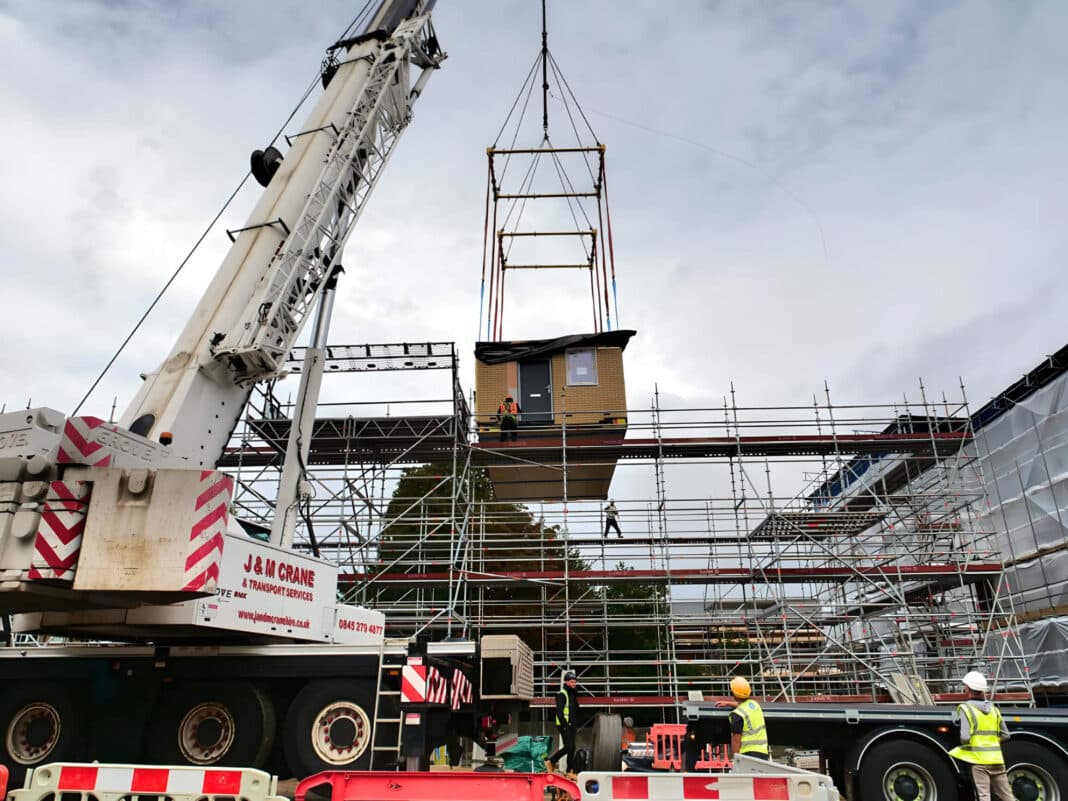Governments have “zero chance” of meeting ambitious housing targets without significant investment in modular and prefabrication construction.
That is according to Carl Leaver, the chair of Goldman Sachs-backed TopHat, who will launch Europe’s largest 3D modular facility later this year.
Giving evidence to peers on the UK Built Environment Committee, Mr Leaver argues that offsite construction can help hit targets as traditional construction firms struggle to find workers.
“I would go far as to say that without category one modular, there is absolutely zero chance of building 300,000 homes in this country.”
“If you look at what’s happening in the employment universe of traditional construction, it is terrifying.”
The world has a significant shortage of construction workers
The construction industry must find 1 million additional workers in the US on top of the average hiring pace to meet demand over the next two years alone.
According to Infrastructure Australia, industry’s demand will reach “unprecedented levels” by 2025, with labour shortages peaking “at a likely shortfall of 93,000 workers in early 2023 or 48% higher than projected supply.”
Demand for workers in New Zealand (50,000 shortfalls) and Canada (80,000 shortfalls) significantly stresses the reconstruction from natural disasters, with more than 20% of New Zealand’s ageing construction force set to retire over the next five years.
In the UK, Mr Leaver said that there are 400,000 fewer workers in UK construction since the global financial crisis of 2008-09.
Modular firms have argued that workers they take on in factories are often from outside the construction industry, trained and can add value to the industry.

Mr Leaver gave evidence as part of an inquiry on the future of modern construction methods (MMC) in the wake of several high-profile failures, specifically among firms in the category one volumetric space.
“Our approach is quite different to other modular builders,” he said.
“We have a timber-frame solution, which means that our whole-life embodied carbon is 83% less than a traditionally built brick home. We can also apply automation to our production methods to keep our costs down.”
TopHat’s factory is forecast to produce enough prefabricated elements for 4,000 homes per year, compared to the 800 homes built from its Derby facility.
Supported by 59 specially-made robots provided by Kuka Robotics, TopHat uses volumetric modular manufacturing to construct houses cost-effectively, at speed and scale.
According to Mr Leaver, the firm focuses on “broadening its routes to market”.
Earlier this year, it struck a deal with Persimmon, in which the FTSE 100 house builder had taken an undisclosed stake in TopHat for £25m.
For the first time, Mr Leaver disclosed that the agreement involves TopHat supplying Persimmon with 5,000 homes over five years.
TopHat is also conversing with “pretty much all the UK’s major house builders” about its product offer.
That also includes France, where TopHat announced a joint venture with French multi-residential builder Nexity earlier this year, “we can go anything from houses to apartments, up to eleven stories,” according to Mr Leaver.
“The goal is to take as much error out of the process as possible.”
However, Mr Leaver admitted that the modular sector’s most significant barrier is “consistent” volume and urged government support.
“If the government could restore some confidence in the sector by… guaranteeing projects and that suppliers will be paid, that will be huge.”
Is prefabrication the future of residential construction?
In June, Wood Central reported on the rise of prefabrication in residential construction.
Australian delegates attending the Wood Solutions and Timber Development Association study in Europe saw first-hand how robots are manufactured at the Randek AB facility in Snickaregatan, Sweden, for BoKlok, a joint venture between IKEA and Skanska.
BoKlok, for its part, has delivered 14,000 affordable houses in Sweden, Finland, Norway, and the UK and has flagged interest in global expansion.
In recent months, Japanese giant Sumitomo has been looking for modular buildings to drive mass timber construction worldwide and has acquired a broad portfolio of residential building firms in the US, the UK and Australia.
And most recently, hardware giant Bunnings has invested in prefabrication to compete with Australia’s frame and truss market.
Last month, Ben McIntosh, Bunnings’ chief operating officer for commercial operations, said the key to success is efficiency and pricing.
“The winners of the industry, whether it’s builders or suppliers – such as us – to the industry will be the ones that run at the most efficient levels, the ones that concentrate on working out that it’s not just about price, but it’s not just about anything. You’ve got to get all elements right.”






